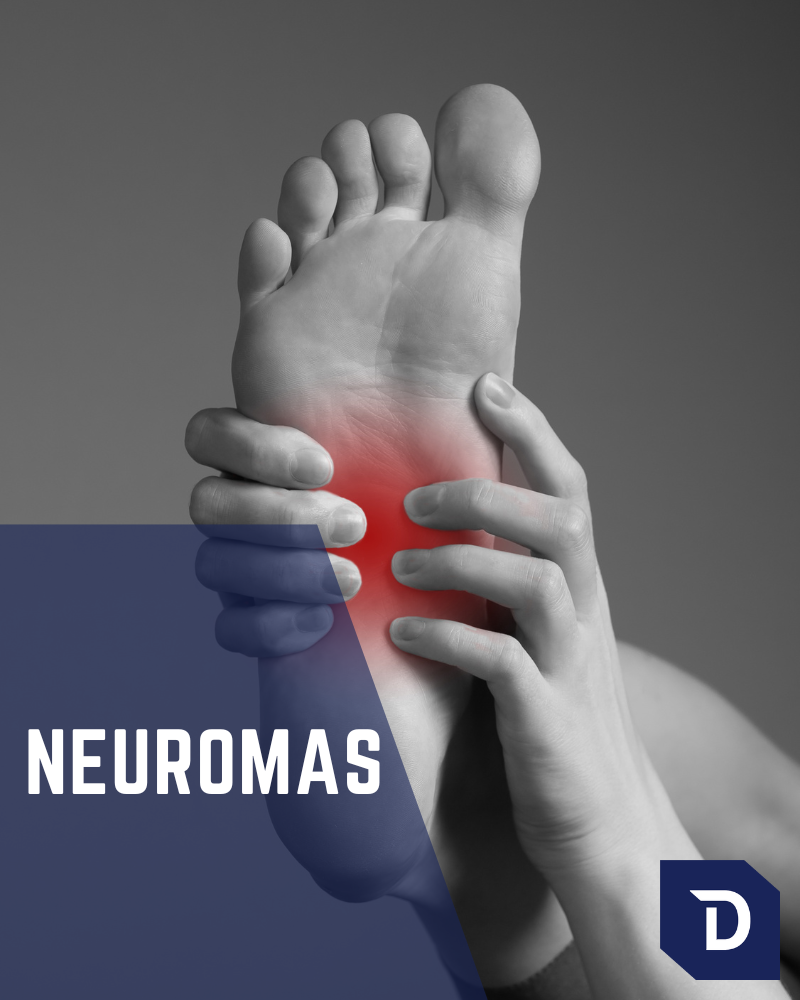
Morton’s Neuroma Foot Treatment
A Morton’s neuroma is caused by a compression of the nerve in the foot. This can lead to pain, tingling, and numbness in the toes. Morton’s neuroma often occurs between the third and fourth toes.
What is a Morton’s neuroma and what are the symptoms?
A Morton’s neuroma is a condition that affects the nerve between the toes. The outer layer of the nerve called the “sheath” becomes thickened and inflamed. Because there is not a lot of room in the foot for the accommodation of the thicker nerve, symptoms will arise due to irritation and pressure against the nerve.
Common symptoms include pain, tingling, and numbness in the affected area. The symptoms can also radiate to the toes that are innervated by the nerve affected, most commonly the 3rd and 4th toes.
Causes of Morton’s neuroma
The causes are not well understood, but it is thought to be due to a combination of factors. Examples include:
- external biomechanical factors such as high heels or tight shoes
- trauma or injury to the foot
- internal biomechanical causes such as flat feet or high arches
- repetitive activities that put pressure on the nerve such as running
Treatment options for Morton’s neuroma
Conservative treatment can be highly successful. Treatment focuses on decreasing inflammation in the nerve and reducing pressure and activity. Some more specific treatment options would include wearing shoes with a wide toe box or high arch support, padding or taping the affected area, corticosteroid injections, physical therapy, and custom-made orthotics.
Corticosteroid injections can be very helpful for this condition because they offer both diagnostic and therapeutic advantages. Therapeutic means the symptoms are improved and this is the ultimate goal. From a diagnostic standpoint, if the injection helps with your symptoms then it is more likely that a neuroma is the true cause of your symptoms.
If conservative treatment does not relieve symptoms, surgery may be recommended. The goal of surgical treatment is to release the pressure on the nerve or by removing the neuroma. The surgery is usually successful, but there is a small risk of recurring symptoms.
Recovery from Morton’s neuroma surgery
Surgery is typically uneventful and it is important to confirm the diagnosis before surgical intervention is considered. Most people can return to normal activities within a few weeks. However, it is important to avoid repetitive activities that put pressure on the nerve after surgery. It is also important to wear shoes that do not compress the foot during this period.
How to confirm the diagnosis
A neuroma is a soft tissue thickening of the outer sheath of the nerve. As such, it will never be seen on an x-ray. If the diagnosis is not clear, other imaging studies can be considered like an ultrasound or MRI.
